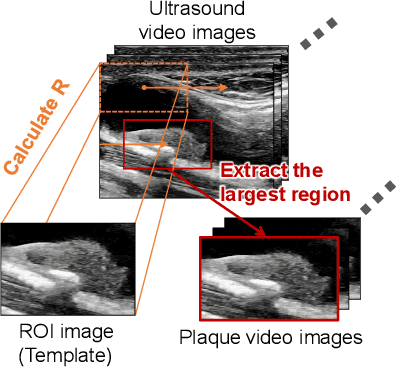Classification of Carotid Plaque with Jellyfish Sign Through Convolutional and Recurrent Neural Networks Utilizing Plaque Surface Edges
Paper and Code
Jun 27, 2024



In carotid arteries, plaque can develop as localized elevated lesions. The Jellyfish sign, marked by fluctuating plaque surfaces with blood flow pulsation, is a dynamic characteristic of these plaques that has recently attracted attention. Detecting this sign is vital, as it is often associated with cerebral infarction. This paper proposes an ultrasound video-based classification method for the Jellyfish sign, using deep neural networks. The proposed method first preprocesses carotid ultrasound videos to separate the movement of the vascular wall from plaque movements. These preprocessed videos are then combined with plaque surface information and fed into a deep learning model comprising convolutional and recurrent neural networks, enabling the efficient classification of the Jellyfish sign. The proposed method was verified using ultrasound video images from 200 patients. Ablation studies demonstrated the effectiveness of each component of the proposed method.
 Add to Chrome
Add to Chrome Add to Firefox
Add to Firefox Add to Edge
Add to Edge